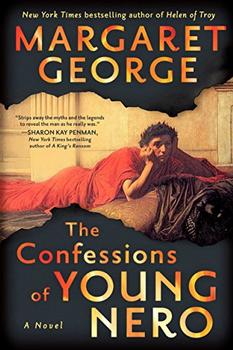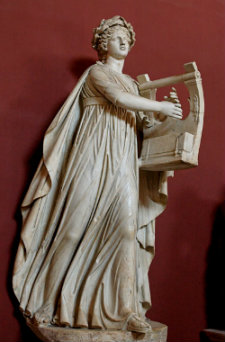Summary | Excerpt | Reading Guide | Reviews | Beyond the Book | Read-Alikes | Genres & Themes | Author Bio

This article relates to The Confessions of Young Nero
The appreciation of music seemed to be one of Emperor Nero's favorite pastimes. He not only organized musical competitions, but played several instruments himself.
 Brass instruments such as the tuba (a long, straight trumpet-like device) and the cornu (the precursor of the French horn) were mostly used by the military of the day while high society usually preferred stringed instruments. The lute was the simplest of these, generally having only three strings and considered a folk instrument. The lyre was more widely used; it was essentially an early harp made of wood or tortoiseshell that was cradled in one arm and plucked with the other hand. The pre-eminent instrument (and the one favored by Emperor Nero) was the cithara (or kithara). Resembling a modern-day zither in complexity, it was generally favored by professional musicians. It was larger and heavier than a lyre and played with a plectrum—a disk similar to a guitar pick.
Brass instruments such as the tuba (a long, straight trumpet-like device) and the cornu (the precursor of the French horn) were mostly used by the military of the day while high society usually preferred stringed instruments. The lute was the simplest of these, generally having only three strings and considered a folk instrument. The lyre was more widely used; it was essentially an early harp made of wood or tortoiseshell that was cradled in one arm and plucked with the other hand. The pre-eminent instrument (and the one favored by Emperor Nero) was the cithara (or kithara). Resembling a modern-day zither in complexity, it was generally favored by professional musicians. It was larger and heavier than a lyre and played with a plectrum—a disk similar to a guitar pick.
Unfortunately, much of what we know today about Roman music is inferred. Scholars have pieced together what they believe Roman music sounded like from various sources—such as the archeological remains of musical instruments; art work like frescos and mosaics depicting musicians; texts describing various types of music; and poems from the era that may have been set to music at one time. Several modern groups have recorded their "best guess" using models of period instruments.
It is believed that there was a system of notation during the time but that it was primarily used by professional musicians and the clergy. The only complete example we have of this notation is actually a Greek work – the Song of Seikilos – found engraved on a stele in Turkey and commonly believed to have been carved during the first century CE. The epitaph states, "I am a tombstone, an icon. Seikilos placed me here as an everlasting sign of deathless remembrance." The "score" was comprised of letters which indicated pitch, with symbols above the letters indicating how long to hold each note.
Some speculate that so few works survived because as the Christian Church gained control, much of Roman music was purged as being pagan.
Picture of Apollo kitharoidos holding a kithara by Jastrow.
Filed under Music and the Arts
![]() This "beyond the book article" relates to The Confessions of Young Nero. It originally ran in March 2017 and has been updated for the
March 2018 paperback edition.
Go to magazine.
This "beyond the book article" relates to The Confessions of Young Nero. It originally ran in March 2017 and has been updated for the
March 2018 paperback edition.
Go to magazine.






Your guide toexceptional books
BookBrowse seeks out and recommends the best in contemporary fiction and nonfiction—books that not only engage and entertain but also deepen our understanding of ourselves and the world around us.